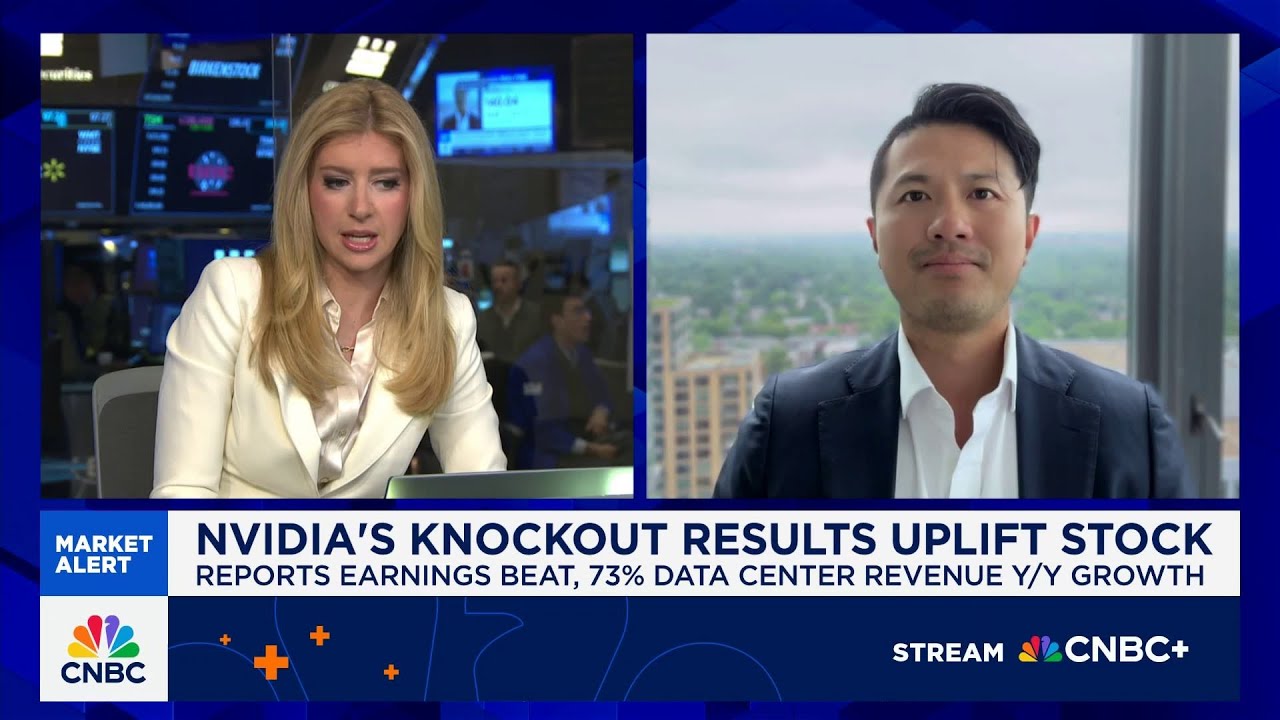Tony Wang from T. Rowe Price highlights Nvidia’s strength as an ecosystem platform company that drives innovation through its integrated software, hardware, and R&D efforts, positioning it for long-term growth in the rapidly expanding AI market. Despite short-term concerns like export restrictions and valuation metrics, he remains optimistic about Nvidia’s future, emphasizing its competitive edge, emerging growth opportunities, and the ongoing adoption of AI technologies.
The video features an interview with Tony Wang, a portfolio manager at T. Rowe Price, discussing Nvidia’s recent performance and outlook. Nvidia reported a strong quarter with an earnings beat and a 73% increase in data center sales, driven by the demand for GPUs powering the AI revolution. Despite some concerns about export restrictions, particularly regarding China-bound chips, Nvidia’s market share in China has declined from about 95% four years ago to around 50%, due to limitations on sales. Nonetheless, the overall AI market is growing rapidly, with potential revenues reaching hundreds of billions of dollars in the coming years.
Wang emphasizes that Nvidia’s success is rooted in its ecosystem platform approach, which goes beyond just selling chips to include software and R&D. He highlights that staying ahead in AI requires building a comprehensive platform that fosters a virtuous cycle of innovation, scale, and market share. The company’s ability to maintain its technological edge and expand its ecosystem is crucial for its continued growth and competitive advantage. Wang also notes that the US has been successful in outcompeting other countries by providing the best technology, which bodes well for Nvidia’s future.
Regarding valuation, Wang explains that Nvidia is still early in its growth curve, despite its significant revenue increases. He points out that new S-curves are emerging, such as autonomous driving in the Middle East and the shift from generative AI to physical applications, which could drive further growth. He believes that Nvidia’s current valuation, based on free cash flow and profit margins, is reasonable, even though the stock appears expensive on some metrics like EV to sales. The company’s profitability and investment in future growth justify its high valuation.
Wang addresses the various overhangs that have kept Nvidia’s stock in a trading range, including tariffs, export controls, and reduced spending on certain AI applications. He suggests that the market needs time to digest these issues and that some concerns may be temporary or in the rearview mirror. He also mentions the possibility of a trade deal improving China sales in the future. Despite cyclical fluctuations in the semiconductor industry, Wang remains optimistic about Nvidia’s long-term prospects, emphasizing that demand for AI and compute workloads continues to grow.
Finally, Wang views the current period as part of the early innings of AI adoption, with significant potential for expansion. He notes that technological advancements, such as falling costs and increased compute capabilities, are opening up new use cases and expanding the total addressable market. While acknowledging the cyclical nature of the semiconductor industry, he advocates for a long-term perspective, believing that Nvidia’s ecosystem platform approach positions it well for sustained growth despite short-term market fluctuations.
